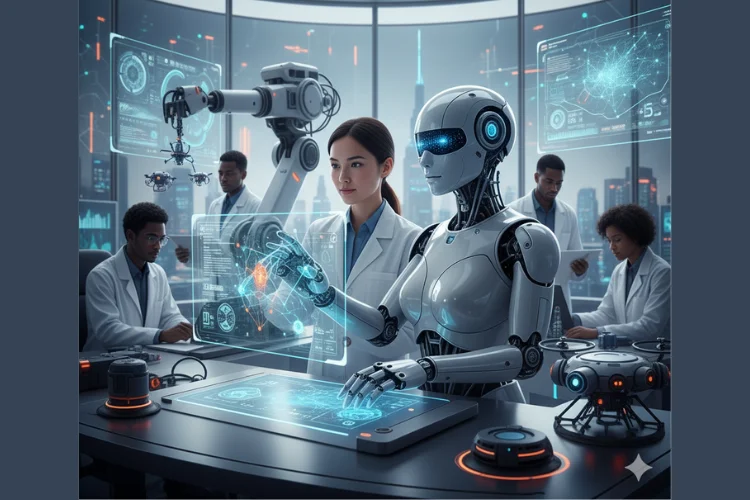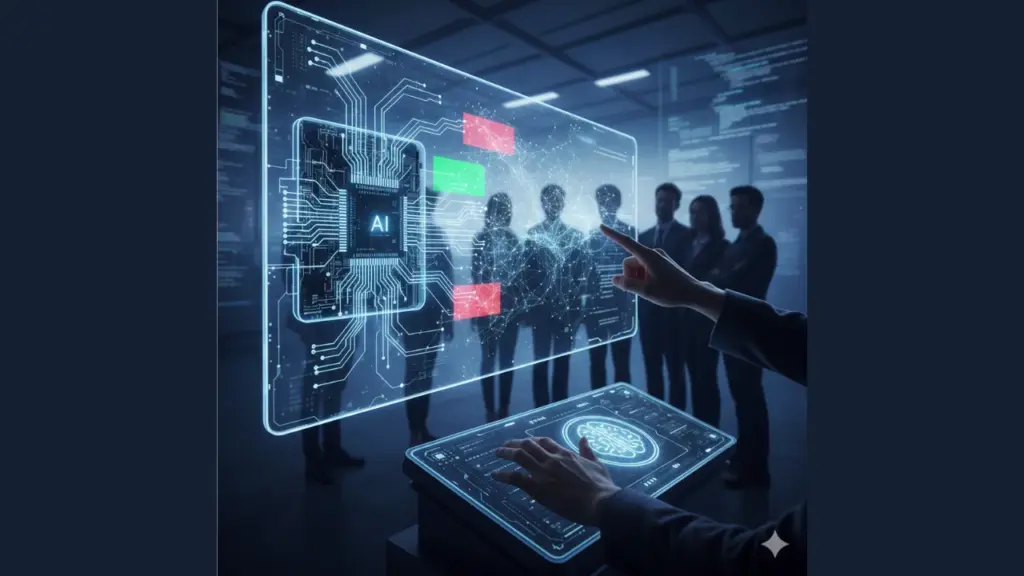1. Introduction: The Reality Behind the AI Revolution
Artificial Intelligence (AI) has become the buzzword of this decade. Every industry—from healthcare and finance to education and entertainment—claims to be revolutionized by AI. The headlines promise machines that think, learn, and act smarter than ever before.
But behind the glittering surface lies a sobering truth: not all AI advancements live up to their claims. Many organizations oversell what their AI systems can actually do, creating unrealistic expectations. This growing gap between promise and performance erodes public trust and confuses both consumers and businesses.
As the digital world races ahead, one thing remains clear—AI needs human oversight, transparency, and ethical direction to reach its full potential.
2. The Rise of AI Hype: What’s Real and What’s Not
The explosion of AI hype began with genuine breakthroughs—like ChatGPT, DALL·E, and other generative models that amazed the world. However, as the excitement grew, so did exaggeration. Startups and tech giants began promoting products as “fully autonomous” or “human-free,” even when human intervention remained essential.
Some AI projects showcased impressive demos but failed to scale in real-world conditions. For instance, self-driving car companies once promised fully autonomous vehicles by 2020—but years later, safety drivers still sit behind the wheel.
This isn’t to discredit AI’s power—it’s to recognize that AI is still developing, and pretending otherwise harms progress. By overstating results, companies risk misleading users, investors, and even regulators.
To move forward responsibly, we must separate AI reality from AI marketing.
3. The Trust Problem: How Overhyped AI Damages Credibility
Trust is the foundation of any technological evolution. When people start doubting AI’s reliability, innovation slows down. Overhyped claims lead to disappointment and skepticism.
Users begin to ask:
- Can I rely on AI recommendations?
- Are these algorithms truly unbiased?
- Is my data secure?
When companies exaggerate results, they unintentionally weaken public confidence. Investors become cautious. Clients question promises. Governments impose stricter regulations.
Transparency, therefore, becomes the antidote. Businesses that share realistic expectations—along with how their AI works—win long-term trust. They also position themselves as credible leaders in an environment increasingly clouded by misinformation.
For many businesses, partnering with a fractional CTO can help ensure AI projects stay grounded in reality. These experienced technology leaders guide startups in balancing ambition with technical feasibility—making sure the company builds sustainable, ethical, and trustworthy AI solutions.
4. Why Human Oversight Still Matters in the AI Era
AI can process vast data, detect patterns, and even predict outcomes—but it lacks human judgment. Machines don’t understand moral consequences or emotional context. Without human oversight, even advanced AI systems can make catastrophic errors.
Consider an AI hiring tool that inadvertently learns bias from historical data. Without human review, it might favor certain demographics over others. In another example, medical AI could misinterpret test results without the contextual understanding a doctor provides.
Humans bring critical thinking, empathy, and accountability—traits no machine can replicate. That’s why human oversight is not optional; it’s essential.
A fractional CTO plays a crucial role here too. By combining deep technical understanding with leadership experience, they ensure AI systems undergo constant human evaluation. They also design ethical frameworks that align with company values and legal standards.
The most successful companies will be those that build AI systems under human supervision, not those that chase full automation.
5. Skill-Building: The Key to Thriving with AI (Not Competing Against It)
The rise of AI doesn’t mean humans are becoming obsolete—it means humans must evolve. The best way to stay relevant isn’t to compete with machines but to learn to collaborate with them.
Professionals should focus on building complementary skills—creativity, communication, problem-solving, and emotional intelligence. AI handles repetitive tasks efficiently, but humans excel at vision, innovation, and leadership.
Learning to manage and direct AI tools is a modern superpower. Businesses that invest in continuous learning build more adaptive teams. Schools and universities, too, should shift focus from rote learning to AI literacy and critical reasoning.
A fractional CTO can help organizations identify which skills matter most in their AI journey. They guide talent development strategies, ensuring teams are ready for a future where humans and machines work side by side.
Remember: thriving with AI isn’t about coding alone—it’s about understanding how AI thinks, where it fails, and how to make it better through human input.
6. The Collaborative Future of AI: Humans and Machines Working Together
The future of AI isn’t about replacement—it’s about partnership. The idea that machines will take every job is outdated. What’s actually happening is job transformation, not elimination.
In healthcare, AI helps doctors diagnose faster. In marketing, it analyzes customer behavior so strategists can focus on creativity. In manufacturing, it predicts machine maintenance, reducing downtime. In every field, AI amplifies human ability when guided wisely.
This collaboration is what the next wave of innovation depends on. The goal isn’t “AI dominance” but AI synergy—a balance where technology handles complexity, and humans handle direction.
Leaders who understand this balance will define the next generation of startups. A fractional CTO can lead that transformation by aligning technical strategy with human values. They ensure that AI solutions stay ethical, transparent, and user-centric.
When humans and AI learn from each other, progress accelerates. But this partnership requires continuous human involvement, data transparency, and a shared sense of responsibility.

7. Conclusion: Build Trust, Skills, and a Real Future with AI
AI’s potential is massive—but only if we use it wisely. The real challenge isn’t building smarter algorithms; it’s building trustworthy systems guided by human ethics and oversight.
As the world navigates this AI-powered future, remember three principles:
- Be transparent—Don’t oversell AI’s power.
- Stay accountable—Humans must remain in control.
- Keep learning—Grow skills that complement AI, not compete with it.
Hype may grab attention, but authentic progress builds confidence. Companies that commit to ethical development and human collaboration will define the future of technology.
If your business wants to explore AI responsibly, consult a fractional CTO who can turn your ideas into practical, trustworthy innovations. Together, we can create solutions that serve both technology and humanity.
At StartupHakk, we believe the future of AI depends not on hype, but on honesty, collaboration, and continuous learning. Let’s build a smarter, more transparent world—one algorithm at a time.




